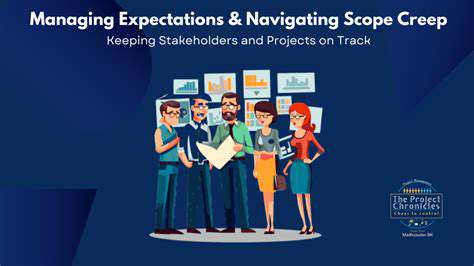How to Learn a New Language Quickly for Travel
Crafting a Personalized Language Learning Plan for Travel

Understanding the Core Concepts of Personalized Language Learning
When we talk about personalized language learning, we're discussing an approach that molds itself around the learner's unique characteristics. Unlike traditional methods, this strategy acknowledges that every individual absorbs knowledge differently. The magic happens when lessons align perfectly with how someone naturally processes information, creating an environment where language acquisition feels almost effortless.
This method goes beyond textbooks - it's about weaving the language into aspects of life that already interest the learner. Whether through favorite hobbies, current events, or personal goals, the content becomes immediately relevant. When learners see direct connections to their lives, retention improves dramatically because the material holds personal significance.
Identifying Individual Learning Styles and Preferences
Have you ever noticed how some people remember song lyrics after hearing them once, while others need to see the words written down? These natural tendencies reveal our preferred learning channels. Some thrive with visual materials like infographics or videos, while others learn best through conversations or hands-on activities.
The key question isn't just how do you learn? but why do you want to learn? A business professional preparing for negotiations needs different vocabulary than a traveler wanting to order meals. Understanding these motivations allows for targeted learning that delivers immediate, practical benefits.
Tailoring Content and Materials to Individual Needs
Imagine learning restaurant vocabulary through actual menus from places you plan to visit, or picking up transportation terms by studying subway maps of your destination city. This approach transforms abstract lessons into tangible skills. The materials should challenge without overwhelming - like climbing a staircase where each step feels achievable yet stretches your abilities.
Nothing kills motivation faster than frustration from content that's either too difficult or insultingly easy. The sweet spot lies just beyond current comfort levels, where learners feel stimulated but not discouraged. Regular check-ins help adjust this balance as skills develop.
Utilizing Technology for Enhanced Learning Experiences
Today's digital tools act like personal language coaches available 24/7. Sophisticated apps analyze patterns in mistakes to pinpoint exactly which grammar concepts need review. Voice recognition provides instant pronunciation feedback, while video chat features connect learners with native speakers across the globe.
These platforms create personalized learning ecosystems that adapt in real-time, offering extra practice where needed and advancing quickly through mastered material. The social components add accountability and make the process more engaging through friendly competition or collaborative challenges.
Monitoring Progress and Adapting the Learning Plan
Effective language learning resembles navigating with GPS - constant course corrections based on current position. Brief daily assessments work better than occasional major tests, providing frequent data points to guide adjustments. Celebrating small victories maintains motivation, while identifying persistent challenges allows for targeted interventions.
The most successful learners view their plan as a living document that evolves with them. Maybe conversational practice needs boosting, or specialized vocabulary requires focus as travel dates approach. Regular reflection ensures the approach stays aligned with changing needs and goals.
Leveraging Technology for Accelerated Learning
Utilizing Language Learning Apps
Today's top language apps feel more like games than textbooks, with progress bars, achievement badges, and daily streaks that tap into our psychological reward systems. The best ones analyze your learning patterns to serve up just the right mix of new material and review.
When selecting apps, consider how they handle mistakes - do they provide clear explanations or just mark answers wrong? Look for ones offering multiple explanation styles (text, audio, visuals) to accommodate different learning preferences. The ideal app should challenge you just enough to stay engaged without frustration.
Embracing Immersive Learning Environments
Full immersion remains the gold standard, but creative alternatives exist. Try changing your phone's language setting or following social media accounts in your target language. Listen to weather reports or news podcasts - even partial comprehension trains your ear to recognize patterns and pick out keywords.
Immersion works because it forces your brain to stop translating and start thinking directly in the new language. Start small - label household items or think through daily routines in your target language. These micro-immersions add up significantly over time.
Mastering Vocabulary with Effective Strategies
Our brains remember stories better than isolated facts. Instead of memorizing word lists, learn vocabulary through short anecdotes or memorable sentences. Create vivid mental images for new words - the more unusual or emotional, the better they stick.
Group related terms together thematically (all restaurant words, all transportation terms) rather than alphabetically. This mimics how we actually use language in real situations, making recall more natural when needed.
Utilizing Language Exchange Platforms
Conversation practice with native speakers provides invaluable feedback no app can match. Start exchanges by preparing specific questions or topics in advance to maximize limited practice time. Don't fear mistakes - most native speakers appreciate the effort and will gently correct errors.
Record sessions (with permission) to review later, noting areas needing improvement. Regular exchanges build not just language skills but cultural understanding - learning why certain phrases are used in specific contexts.
Leveraging Technology for Personalized Learning
Advanced platforms now use AI to create hyper-personalized lessons. Some analyze your speech patterns to customize pronunciation exercises, while others track which grammar concepts you consistently struggle with to generate targeted practice.
The most effective systems combine multiple media types - explaining a concept through text, reinforcing with audio examples, then testing via interactive exercises. This multimodal approach ensures comprehension regardless of your primary learning style.
Engaging in Active Recall and Spaced Repetition
Our brains retain information better when we work to retrieve it. Instead of passively rereading notes, cover them and try to recall key points. Digital flashcard systems automate this process, but the real magic happens when you apply the technique to real-life situations.
Spaced repetition shines when combined with personal relevance. If you learn umbrella today, use it in a sentence about tomorrow's forecast. This contextual reinforcement creates stronger neural connections than isolated memorization.








![Best Luxury Travel Credit Cards [2025]](/static/images/27/2025-05/ExploringSpecificCardOptionsfor2025.jpg)

![Photography Gear for Travel [What to Pack]](/static/images/27/2025-05/PrioritizingPortabilityandProtection3APackingStrategically.jpg)

